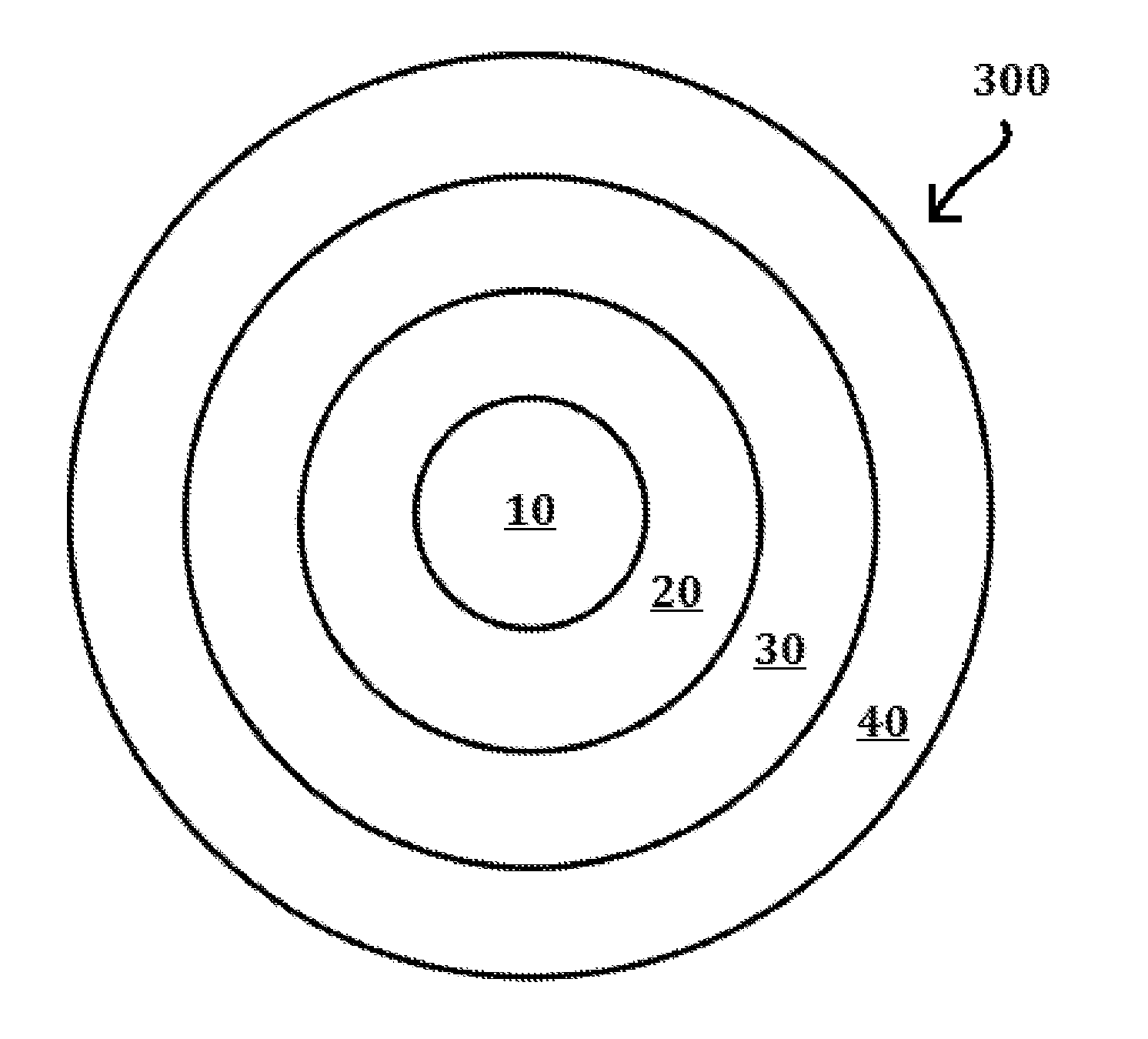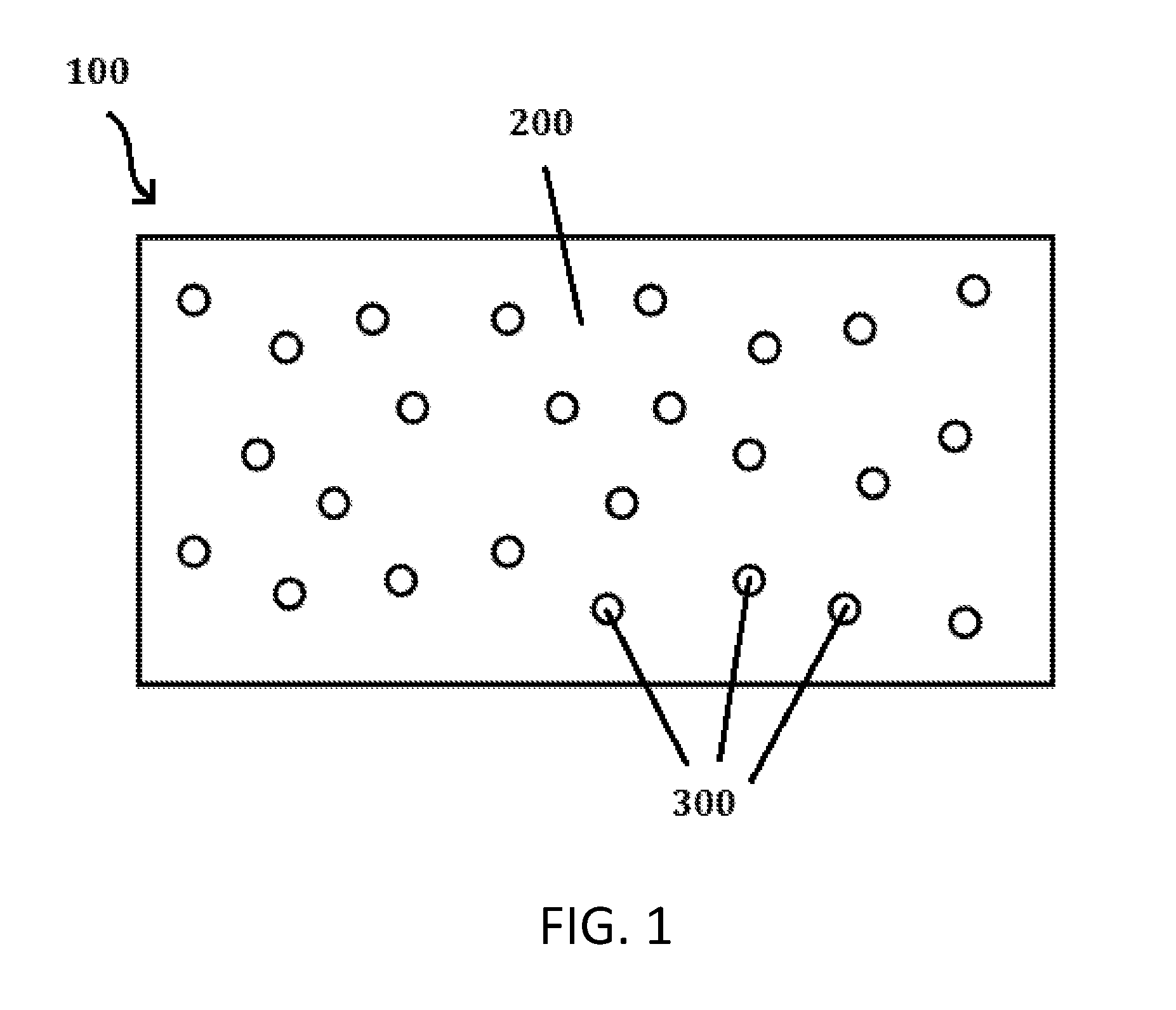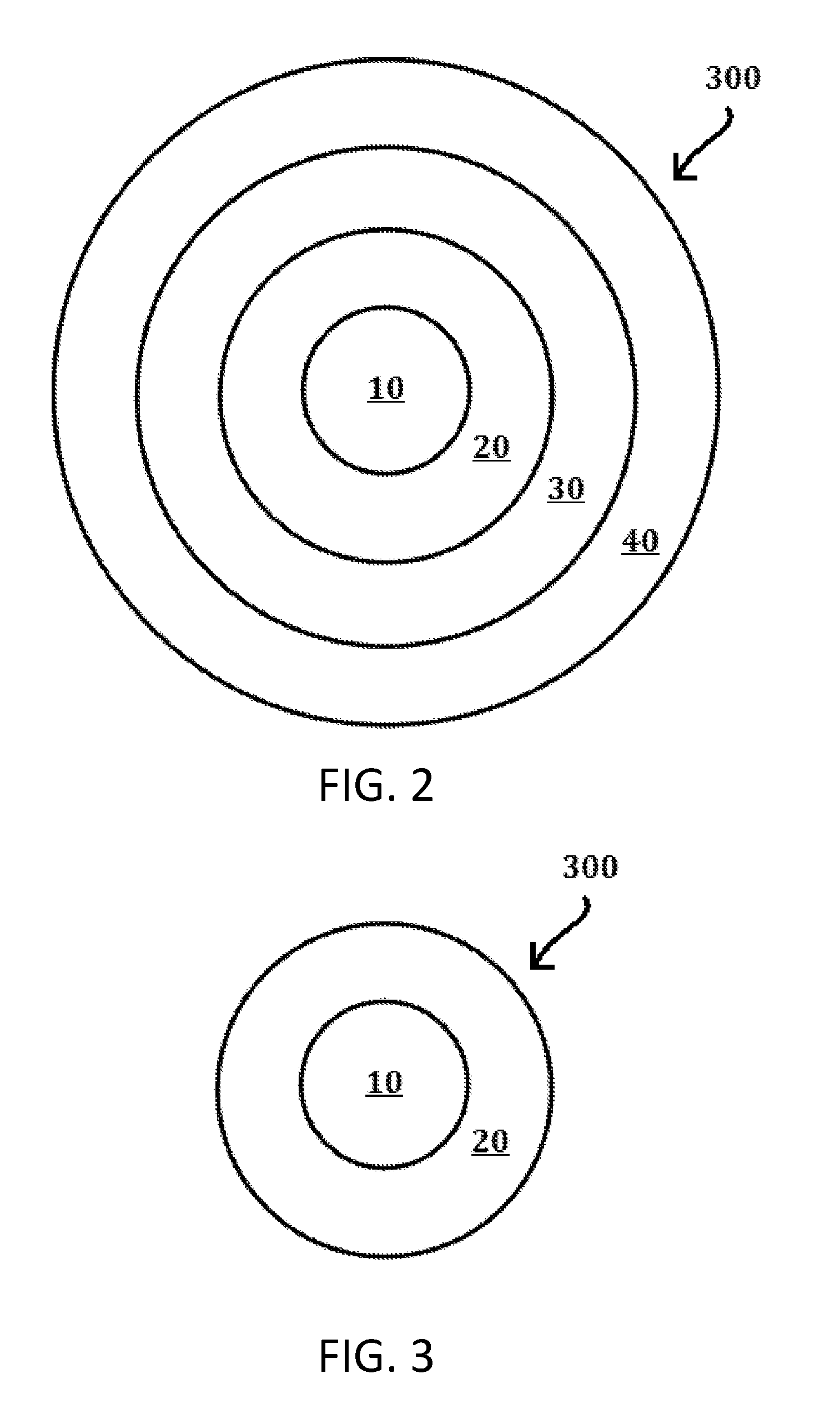Polymer composite comprising metal based nanoparticles in a polymer matrix
a polymer composite and metal-based technology, applied in the field of composite materials, can solve the problems of inability to scale up production, uneven nanoparticle dispersion, and difficulty in current methods for producing inorganic metal or metal-oxide nanoparticles, and achieve the effect of reducing the difficulty of production
- Summary
- Abstract
- Description
- Claims
- Application Information
AI Technical Summary
Benefits of technology
Problems solved by technology
Method used
Image
Examples
Embodiment Construction
[0013]Referring to the drawings in general and to FIG. 1 and FIG. 2 in particular, it will be understood that the illustrations are for the purpose of describing a particular embodiment of the invention and are not intended to limit the invention thereto. A composite 100 comprises a substrate 200 having and a plurality of core-shell nanoparticles 300. The substrate 200 is a polymer matrix, a metal-organic framework, a microporous structure, or a nanoporous structure. Microporosity and nanoporosity are used to describe the presence of vacant space within the matrix of a porous substrate. The linear dimensions of such space are in the order of about 0.5 μm to about 500 μm for microporous substrate, and about 0.5 nm to about 500 nm for nanoporous substrate, respectively. Free volume is used to describe the vacant sites within a polymer substrate into which organic or inorganic molecules can diffuse within the substrate. The linear dimensions of such space are in the order of about 0.04...
PUM
| Property | Measurement | Unit |
|---|---|---|
| mean average diameter | aaaaa | aaaaa |
| mean average diameter | aaaaa | aaaaa |
| diameter | aaaaa | aaaaa |
Abstract
Description
Claims
Application Information
 Login to View More
Login to View More - R&D
- Intellectual Property
- Life Sciences
- Materials
- Tech Scout
- Unparalleled Data Quality
- Higher Quality Content
- 60% Fewer Hallucinations
Browse by: Latest US Patents, China's latest patents, Technical Efficacy Thesaurus, Application Domain, Technology Topic, Popular Technical Reports.
© 2025 PatSnap. All rights reserved.Legal|Privacy policy|Modern Slavery Act Transparency Statement|Sitemap|About US| Contact US: help@patsnap.com



